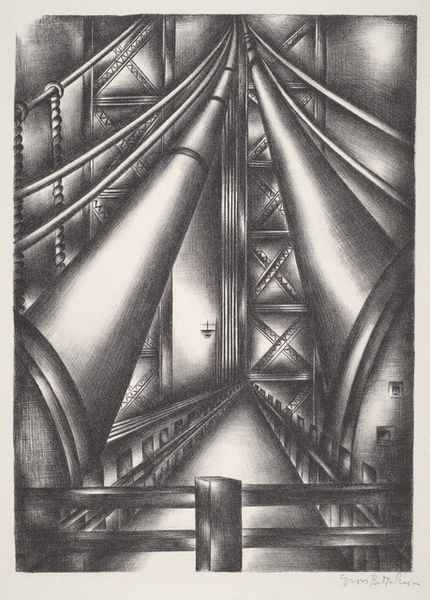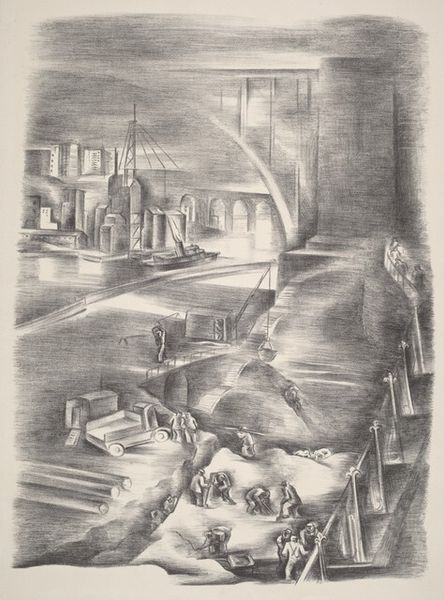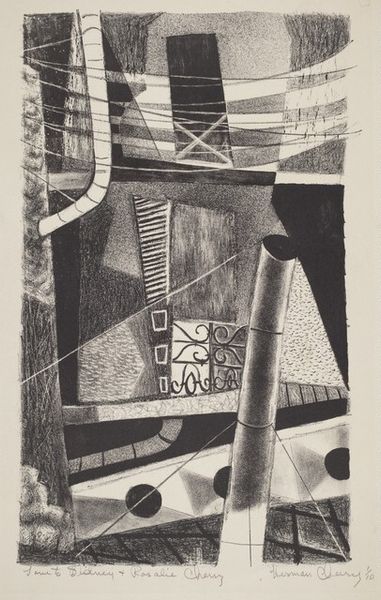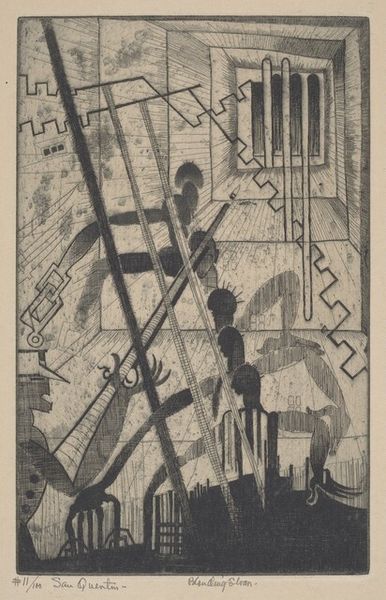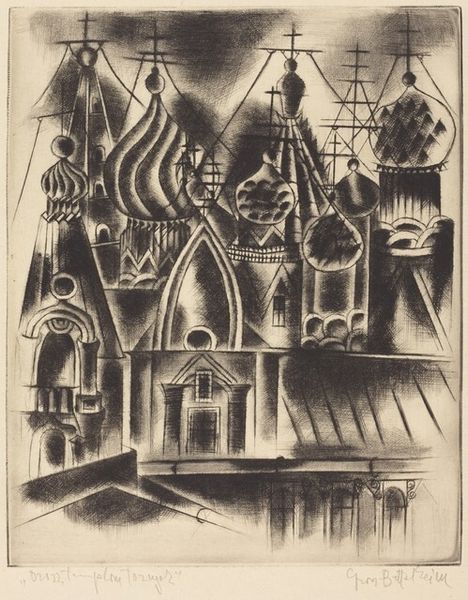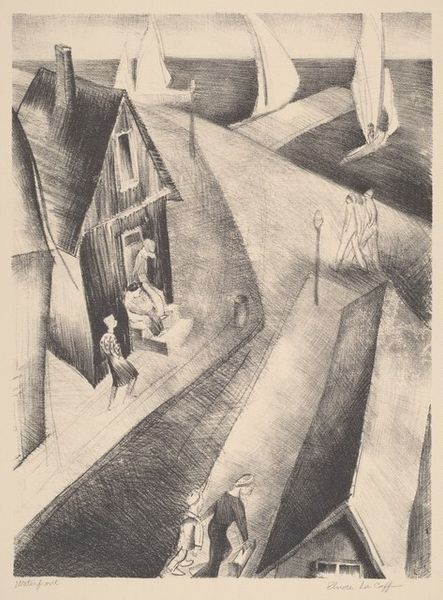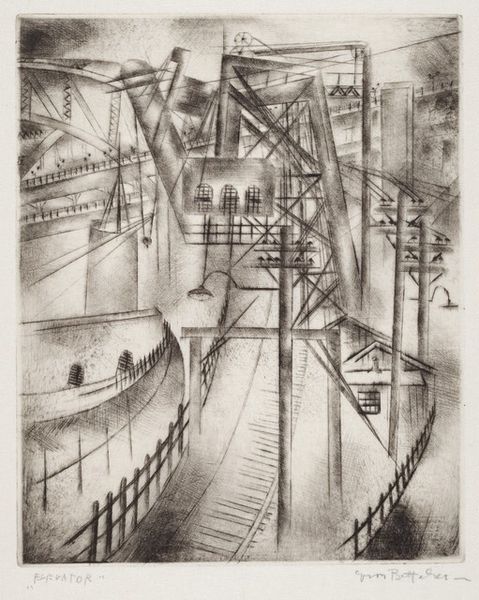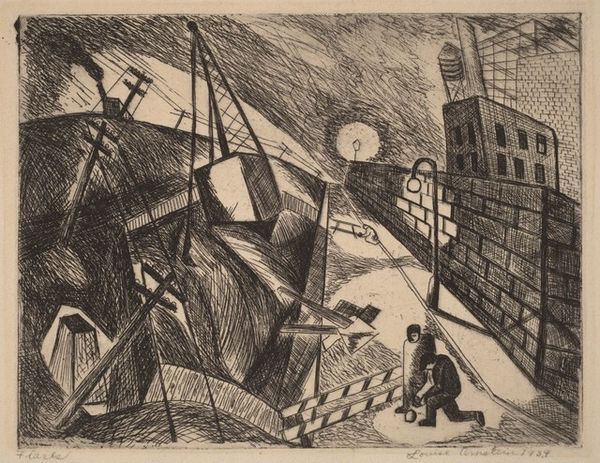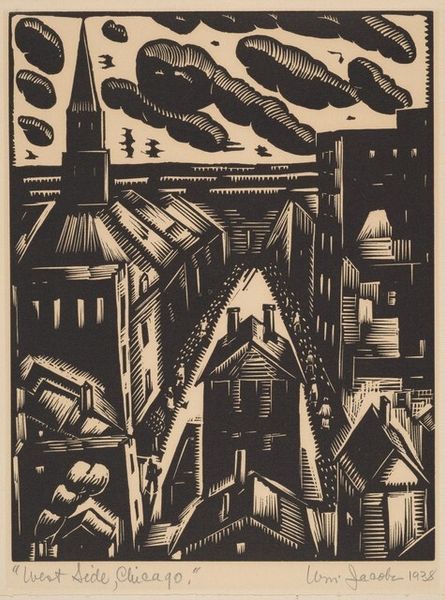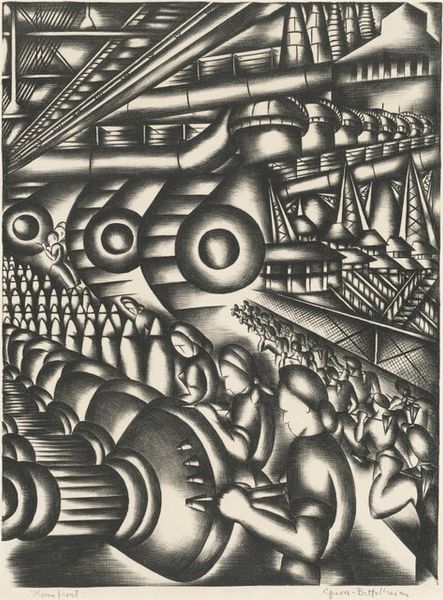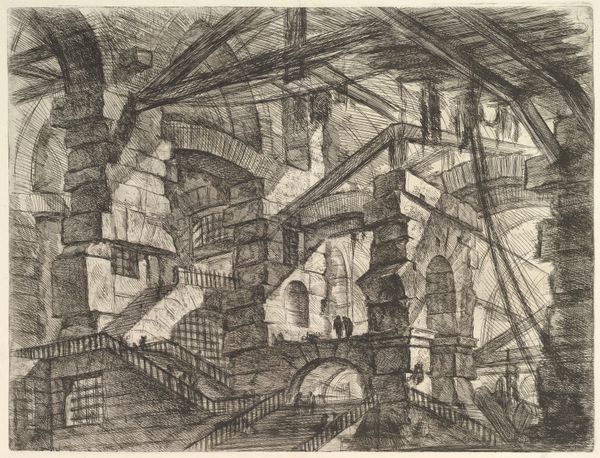
drawing, print, graphite
#
drawing
# print
#
pencil drawing
#
graphite
#
cityscape
#
modernism
#
realism
Dimensions: image: 35 × 23 cm (13 3/4 × 9 1/16 in.) sheet: 40.2 × 30.5 cm (15 13/16 × 12 in.)
Copyright: National Gallery of Art: CC0 1.0
Editor: So, this is Jolán Gross-Bettelheim’s "Bowery," a graphite drawing and print from around 1938. There’s a somber feel to it, almost oppressive with the heavy use of shadow and the grimy city details. How do you interpret this work? Curator: I see a powerful commentary on urban alienation and the socio-economic conditions of the time, particularly during the late Depression era. The Bowery, known for its flophouses and marginalized communities, is presented here not just as a physical space, but as a metaphor for societal neglect. Consider the high contrast – the stark division between light and shadow could represent the deep disparities of wealth and poverty. What feelings does that evoke for you? Editor: It does feel stark. The darkness makes me think about unseen struggles, the architecture towering above. Curator: Precisely. Think about the artist, an immigrant, depicting this scene. This artwork acts as a social critique. How does the use of perspective affect your understanding? Editor: The perspective is very angular, almost distorted, and makes the buildings loom. It does amplify that sense of unease and being overwhelmed by the city. I see that there are people up in the windows in the top right. Curator: Yes, do you get the sense that those figures looking out are observers or inhabitants of the city, trapped or part of a vibrant social system? Their positioning is not accidental, they give us insight. Editor: Inhabitants for sure, looking out, maybe a bit trapped like they are behind bars. I guess the work makes me realize there is still the same division today. Thanks for that observation, I learned so much. Curator: The past and present converge within the artwork’s meaning. It inspires critical consciousness about ongoing social inequalities, and reveals a powerful political intention to critique marginalisation and class divides.
Comments
No comments
Be the first to comment and join the conversation on the ultimate creative platform.
